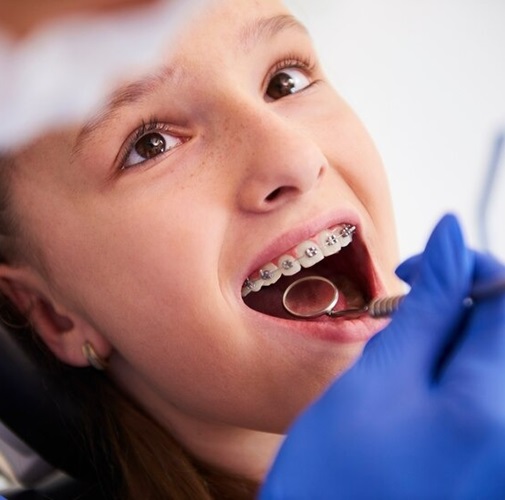
Specialized Braces Treatment
Braces are orthodontic devices used to straighten crooked and misaligned teeth, as well as to realign the jaw. They are most commonly associated with orthodontic treatment, particularly among children aged 10 to 14 years, although people of all ages can benefit from them.
The process of getting braces varies for each patient, depending on their specific dental needs, jaw structure, and age. Braces typically consist of seven main components that work together to gradually reposition teeth and improve overall dental health.
There are four primary types of braces:
-
Metal Braces: These are the traditional and most common type of braces. They are made of high-grade stainless steel and consist of brackets attached to the front of the teeth connected by metal wires. They are highly efficient and cost-effective, making them a popular choice for children, teens, and adults who are not concerned about the appearance of metal brackets.
-
Clear Braces: Also known as ceramic or invisible braces, these function similarly to metal braces but use tooth-colored or clear ceramic brackets that blend in with natural teeth. They also feature clear rubber bands and white elastic ties, making them less noticeable than metal braces. Clear braces are favored by teens and adults who desire a more discreet orthodontic option.
-
Lingual Braces: These are placed on the back (lingual) side of the teeth, making them virtually invisible. Lingual braces work similarly to traditional metal braces but are less commonly used due to their higher cost and potential discomfort.
-
Clear Aligners: Examples include Invisalign and other similar brands. Clear aligners are removable, transparent trays that gradually move teeth into alignment. They are custom-made for each patient and are popular among adults and teens who prefer a more flexible and less visible orthodontic treatment option.
Each type of braces or aligners has its advantages and considerations, depending on factors like visibility, comfort, and treatment complexity. Ultimately, the choice of braces depends on the patient's orthodontic needs and personal preferences, with the goal of achieving a healthier and straighter smile over time.


